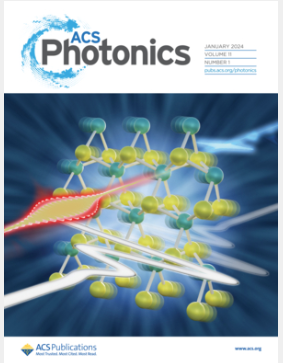用于仿生视觉系统的高鲁棒性、紧凑型bi2o2se近红外视网膜传感器
IF 6.7
1区 物理与天体物理
Q1 MATERIALS SCIENCE, MULTIDISCIPLINARY
引用次数: 0
摘要
近红外(NIR)视觉系统在仿生视觉方面具有独特的优势,特别是在低光和复杂环境中表现优异。视网膜传感器作为仿生视觉系统的核心输入部件,对系统的整体性能起着至关重要的作用。然而,在实现高鲁棒性和高集成度方面仍然存在重大障碍。本研究开发了一种基于Au/Cr/Bi2O2Se/Cr/Au结构的双端光电探测器。得益于高质量的Bi2O2Se纳米片,该器件在915 nm波长下具有1.8 × 103 a /W的高光响应性,3.14 × 1011 Jones的比探测率和2.47 × 105%的外量子效率。此外,我们还开发了一种基于光电探测器的视网膜传感器。Bi2O2Se光电探测器出色的光响应性显著增强了传感器的鲁棒性。此外,我们提出了一种双模架构,与传统的视网膜传感器设计相比,核心组件的数量减少了72%。更重要的是,我们将视网膜传感器模型应用于仿生视觉系统,成功实现了车辆位置识别和手势识别任务。本研究为下一代视网膜传感器的设计提供了新的思路,进一步推动了仿生视觉技术的发展。本文章由计算机程序翻译,如有差异,请以英文原文为准。

High-Robustness, Compact Bi2O2Se-Based NIR Retinal Sensor for Bionic Vision Systems
The near-infrared (NIR) vision system has demonstrated unique advantages in bionic vision, particularly excelling in low-light and complex environments. The retinal sensor, as the core input component of the bionic vision system, is critical to the overall performance of the system. Nevertheless, significant obstacles persist in achieving high robustness and high integration. Here, the study develops a dual-terminal optoelectronic detector based on an Au/Cr/Bi2O2Se/Cr/Au structure. Benefiting from high-quality Bi2O2Se nanosheets, the device exhibits a high photoresponsivity of 1.8 × 103 A/W, a specific detectivity of 3.14 × 1011 Jones, and an external quantum efficiency of 2.47 × 105% at a wavelength of 915 nm. Furthermore, we developed a retinal sensor based on photodetectors. The exceptional photoresponsivity of the Bi2O2Se photodetectors significantly enhanced the robustness of the sensor. Additionally, we proposed a dual-mode architecture, offering a 72% reduction in the number of core components compared to traditional retinal sensor designs. More importantly, we apply the retinal sensor model to a bionic vision system, successfully achieving vehicle position recognition and gesture recognition tasks. This work provides a novel approach for designing next-generation retinal sensors, further advancing the development of bionic vision technology.
求助全文
通过发布文献求助,成功后即可免费获取论文全文。
去求助
来源期刊

ACS Photonics
NANOSCIENCE & NANOTECHNOLOGY-MATERIALS SCIENCE, MULTIDISCIPLINARY
CiteScore
11.90
自引率
5.70%
发文量
438
审稿时长
2.3 months
期刊介绍:
Published as soon as accepted and summarized in monthly issues, ACS Photonics will publish Research Articles, Letters, Perspectives, and Reviews, to encompass the full scope of published research in this field.
 求助内容:
求助内容: 应助结果提醒方式:
应助结果提醒方式:


